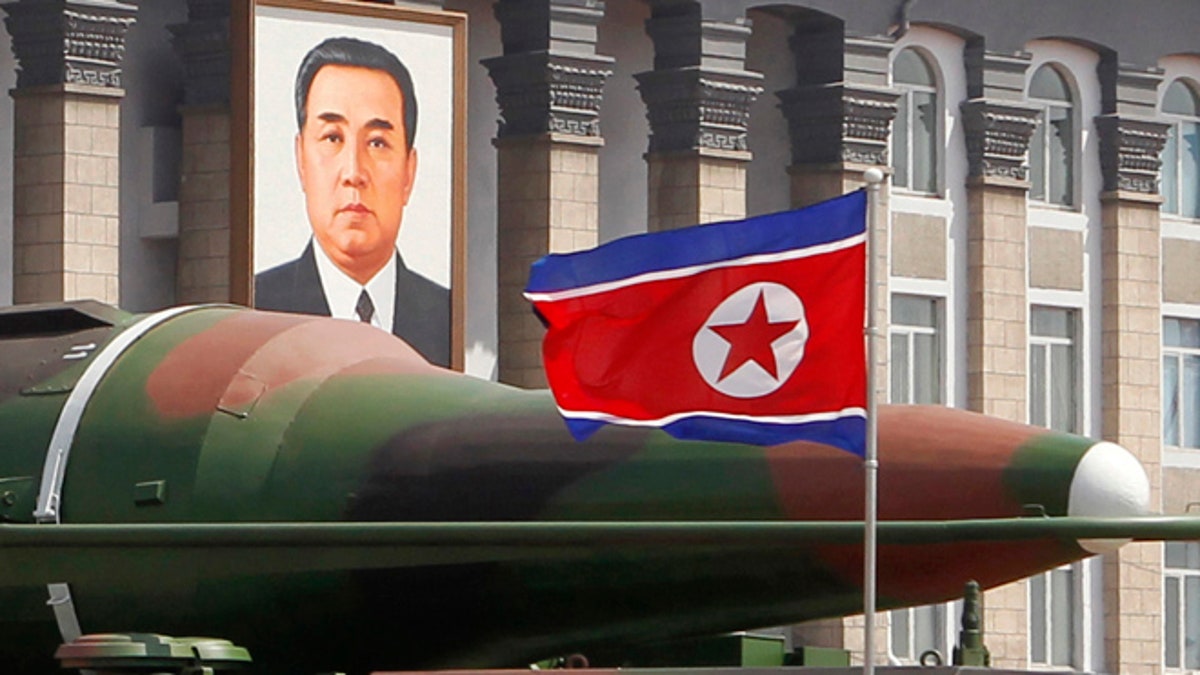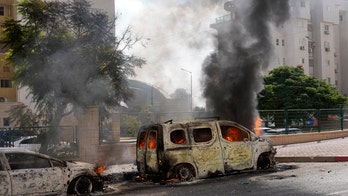
A new missile is carried during a mass military parade at the Kim Il Sung Square in Pyongyang, North Korea. (AP)
North Korea is nearing completion of a light-water reactor that is primarily intended to generate electricity but which could add to concern over its nuclear program, a U.S.-based institute said Wednesday.
Satellite photos, the latest taken this month, show the North appears to be putting finishing external touches to the reactor at its Yongbyon nuclear complex, according to 38 North, the website of the U.S.-Korea Institute at Johns Hopkins School of Advanced International Studies in Washington. The reactor could potentially begin operation within a year or so, although considerable technical hurdles remain, 38 North says in its analysis.
Light-water reactors are best-suited for electricity generation, and U.S. academics who visited the site in 2010 when construction of the reactor began said it appeared designed for that purpose. It might be adapted to produce plutonium for weapons, but North Korea already has what's known as a gas-graphite reactor, which provides an easier option for making bomb fuel.
North Korea announced in early April it was restarting the older reactor from which it is estimated to have derived enough plutonium for a half-dozen bombs before it was shuttered in 2007 during aid-for-disarmament negotiations. The announcement came amid a torrent of war threats from Pyongyang after the U.N. Security Council tightened sanctions in response to a nuclear test explosion in February, the North's third.
38 North says if North Korea has produced enough low-enriched uranium to run the new reactor, it could commence the lengthy process of starting it up in the coming weeks, and be fully operational during the first half of 2014.
"Pyongyang is probably planning to build additional power reactors to end its electricity shortage and help solve its economic problems. It may have some residual ability to produce plutonium for nuclear weapons, but the biggest concern about these reactors is whether they are safe or not," said Joel Wit, a former State Department official and editor of 38 North.
North Korea lacks experience in designing and running light-water reactors and there's no international oversight of its nuclear program. Containing the nuclear fuel and keeping the reactor cool pose major challenges -- as would unforeseen events like natural disasters that caused a meltdown in Japan's Fukushima reactor in 2011, the analysis says.
Aerial images indicate the North has made rapid headway in the past year on constructing the reactor, although installation of its water and electrical connections is incomplete. And there are signs that equipment was moved inside the reactor during the fall. That's where the bulk of the work is now likely being done -- beyond satellite eye's view.
North Korea revealed an industrial-scale uranium enrichment facility in 2010 to provide fuel for the light-water reactor -- a development that caused international alarm because of the potential for the same centrifuges to be reconfigured to produce highly enriched uranium, giving the North another means of creating fissile material for weapons.
38 North said if the enrichment facility has been operating since then -- which isn't clear -- it may have produced enough low-grade uranium to power the reactor for several years.
Also unclear is whether the North has the know-how on assembling nuclear fuel to be able to power the reactor.




